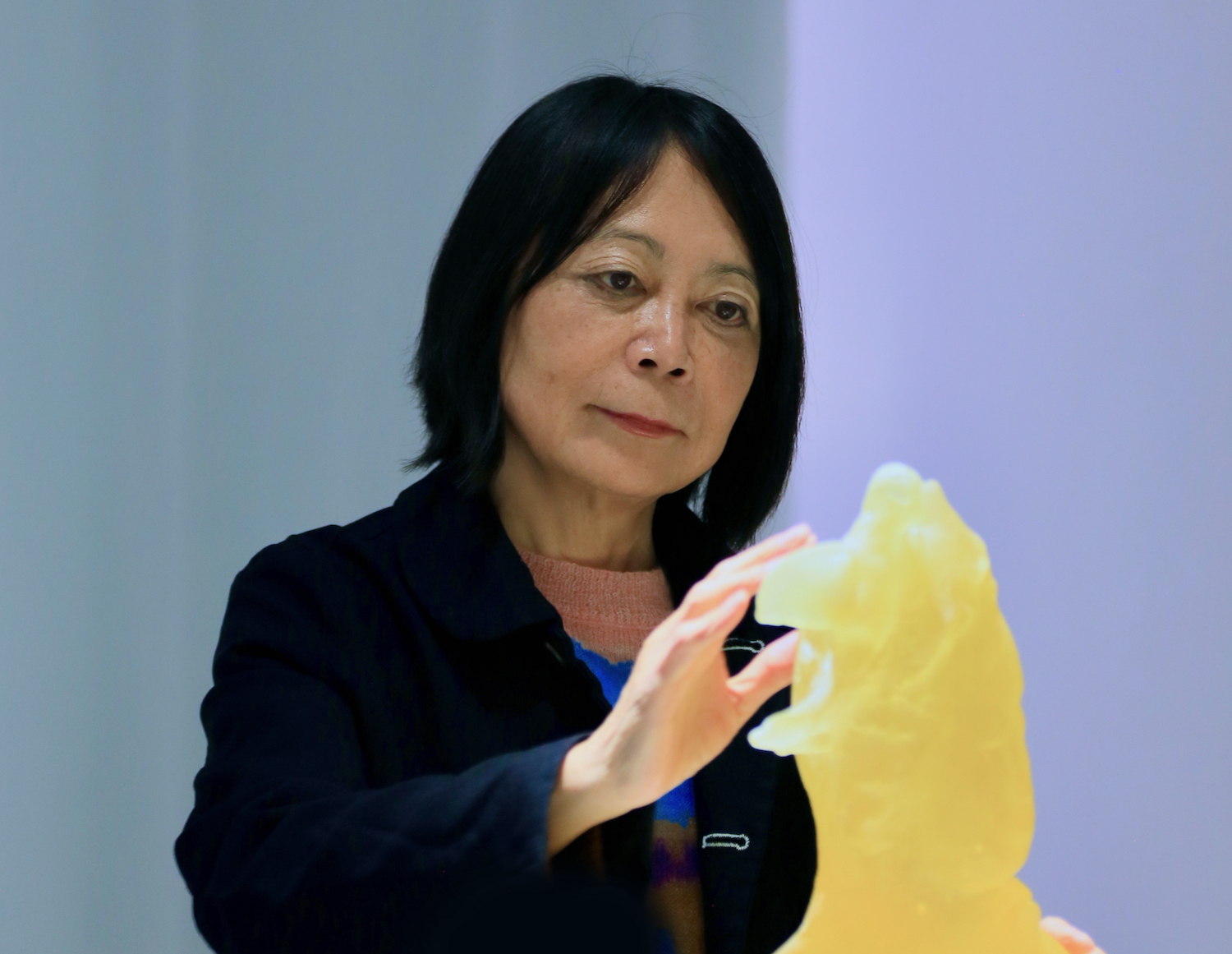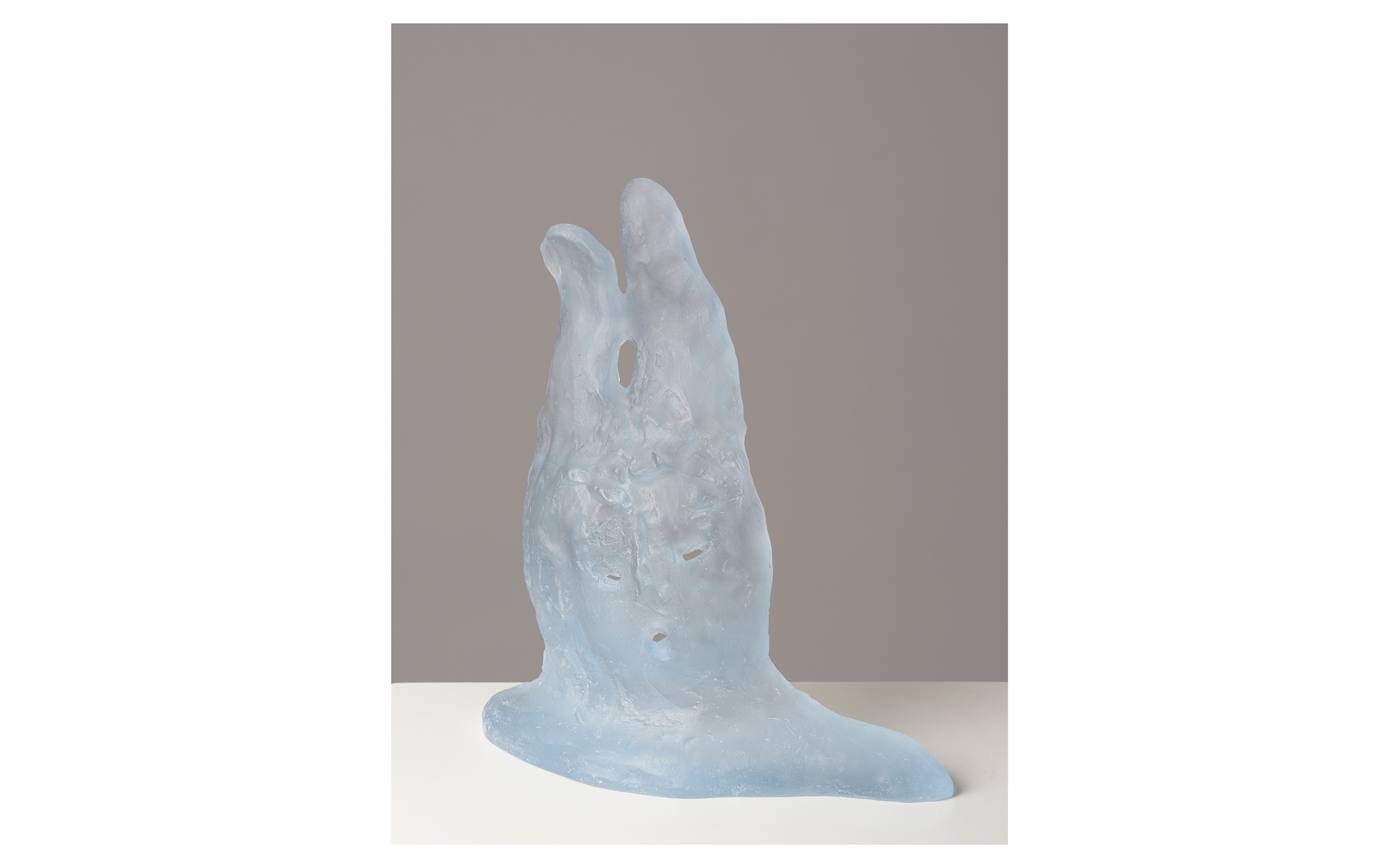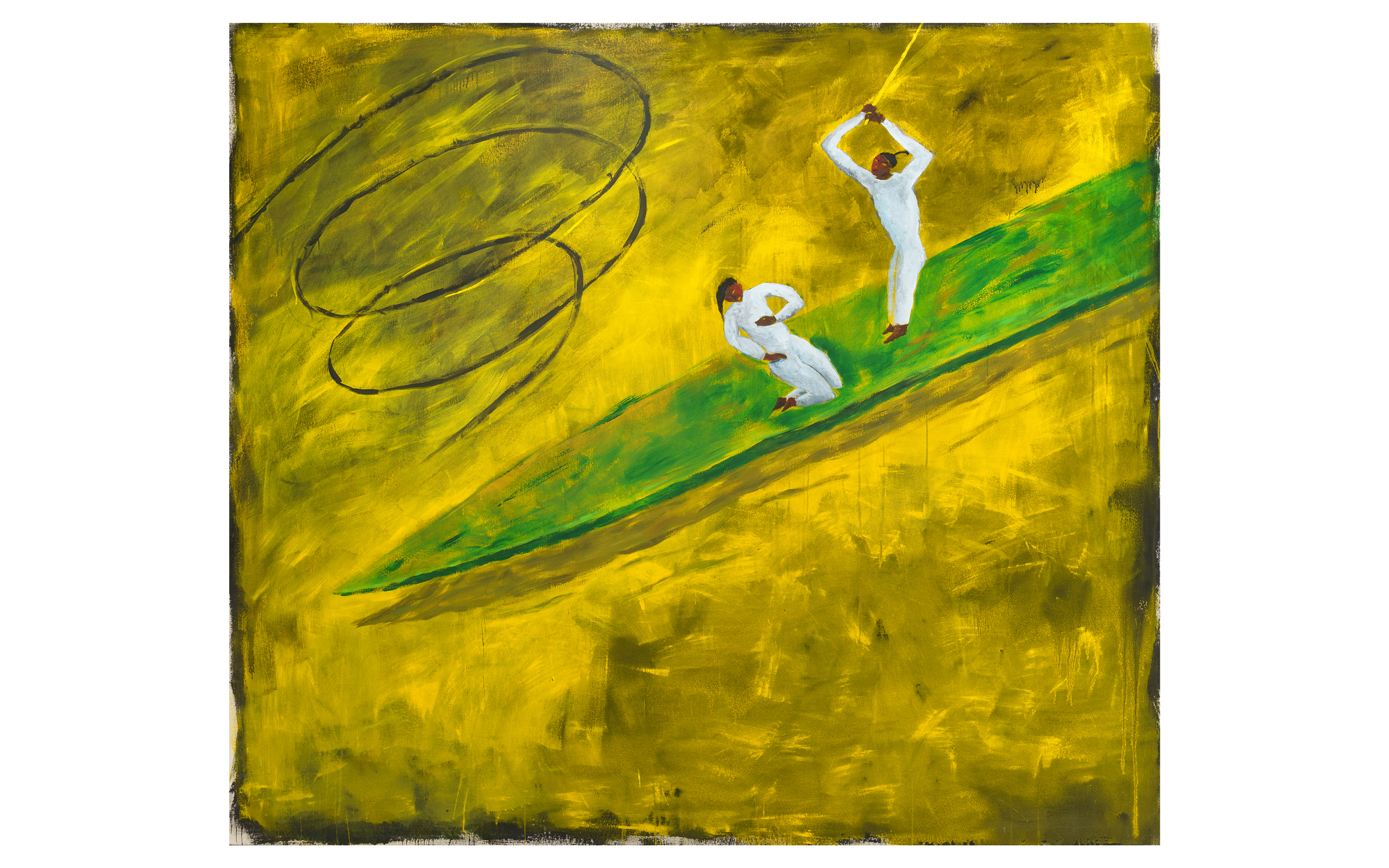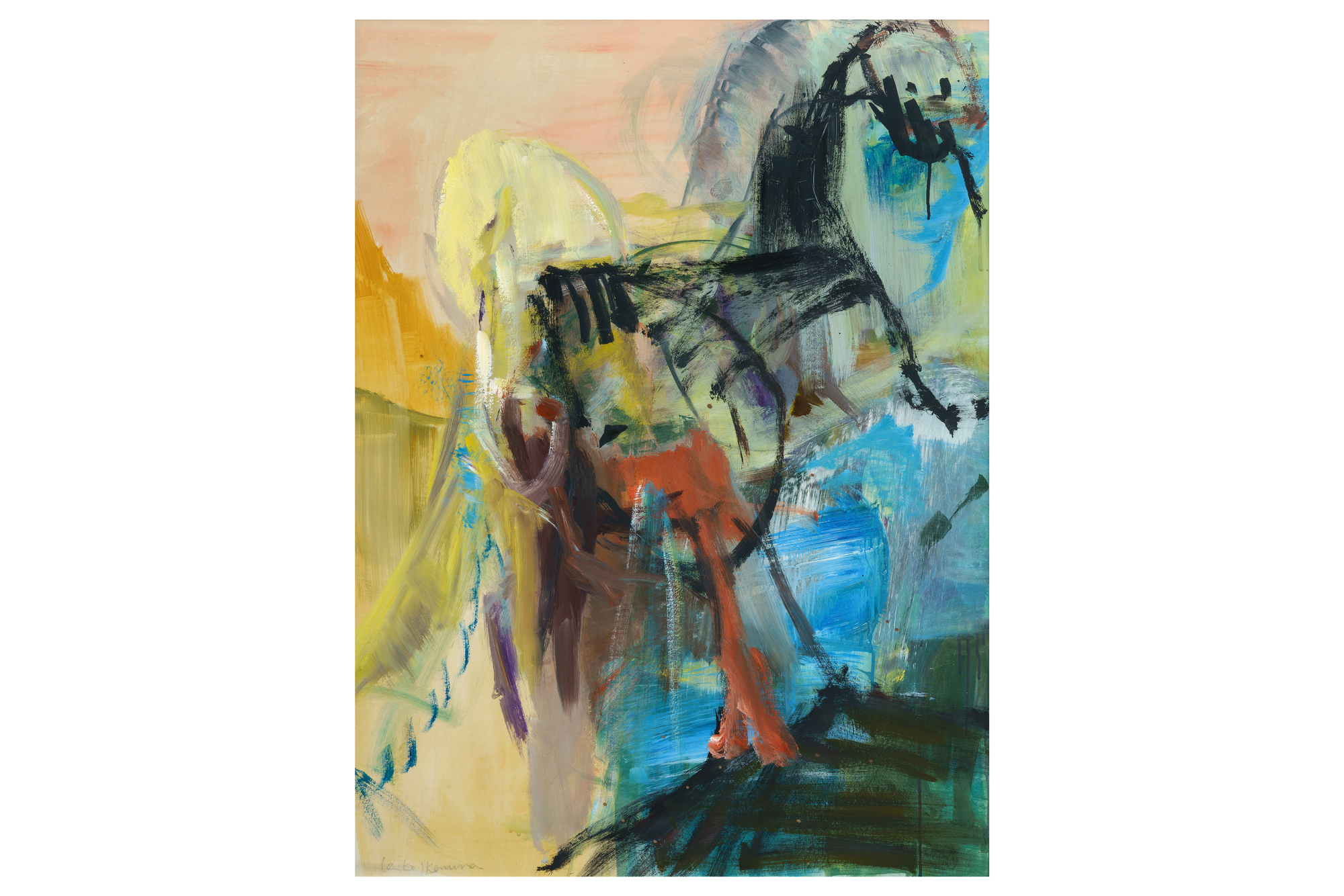A Foreigner Everywhere
 Portrait image of Leiko Ikemura, photo: Xin Tahara Tokyo Art Beat
Portrait image of Leiko Ikemura, photo: Xin Tahara Tokyo Art Beat
Over the course of her career spanning multiple decades, artist Leiko Ikemura has achieved bridging East and West, culture and nature, and the animal and human worlds alike. In her current show at Bündner Kunstmuseum in Chur, Ikemura looks back at a formative stay in the Swiss Alps more than thirty years ago, which led to significant changes in her work, and brings it into a present context.
The rabbit is an animal of truly mythical proportions. In Western culture, this curious animal, characterised by its long hind legs and outsized, antenna-like ears, is predominantly known as a symbol of fertility, growth and renewal. In Eastern cultures, and particularly in Buddhist traditions, the rabbit is also regarded as an emblem of care and selflessness. Moreover, it is often associated with the moon – and thus with the magical powers of the night and the endless cycles of waxing and waning.
The rabbits feature prominently in Leiko Ikemura’s oeuvre, especially in the artist’s sculptural output. The most prominent example may be her work ‘Usagi Kannon’, which was first made in 2011. This large, mythological hybrid of a rabbit and a woman is derived from Christian iconography, a ‘Virgin of Mercy’ to be precise. Standing tall and wearing a skirt that flares wide open, the figure allows people to enter her hollow body and seek shelter beneath the skirt. A smaller work like the 2023 glass table-top sculpture ‘Usagi Face’ in the Julius Baer Art Collection shows a rabbit’s face which is mysteriously translucent and sculpted in a deliberately vaguely manner, although the characteristic, antenna-like ears are clearly visible.
‘Those antennas connect rabbits with universal energies, leading them to ultimately arrive at the right place,’ Ikemura said in a recent interview with Swiss newspaper ‘NZZ’. ‘Although they don’t go quietly and straight like a cow, but in a wild zigzag instead. I like that.’ When viewed from that angle, the rabbit might be more than a mere motif in her work. It is tempting to take the animal as a symbol of the artist’s own long and winding journey, one marked by constant change and restless movement – but always led by a distinct energy.
 Leiko Ikemura (b. 1951), ‘Usagi Face’, 2023, cast glass, 40.5 x 38 x 12 cm, courtesy the artist and Julius Baer Art Collection
Leiko Ikemura (b. 1951), ‘Usagi Face’, 2023, cast glass, 40.5 x 38 x 12 cm, courtesy the artist and Julius Baer Art Collection
Early Years
Ikemura was born in a town on the Japanese coast and now resides in the German capital of Berlin, where
she has taught at the University of Fine Arts since the early 1990s. She arrived in Europe in 1972 and
initially went to Spain with the aim of learning the language, but soon decided to study art at the
Academy of Fine Arts in Seville. Having graduated in 1978 she moved to Switzerland the following year.
Thanks to her drawings and expressive paintings she soon became a known figure in the Zurich art world,
and in 1981 she was awarded the Kiefer Hablitzel Foundation’s prestigious art prize.
However, after a few years in the Swiss city Ikemura moved on to Germany, settling in Cologne around the mid-eighties. Back then, the city was widely known as one of Europe’s art hubs, famous for its ‘Junge Wilde’, a group of mainly neo-expressionist (and predominantly male) painters known as the ‘young wild ones’. But even if Ikemura was sometimes associated with that movement, she never properly fitted in with it.
Her work from that period, however, was also visibly expressive. Many of her drawings and canvases from those years convey a somewhat aggressive atmosphere, addressing themes of war, conflict or violence head-on. One of her most well-known works from the era is the 1980 painting ‘Kamikaze’. Directly tackling Japan’s traumatic wartime past, the artist shows a suicide bomber’s plane plunging towards an aircraft carrier. The tilted horizon adds to the dramatic atmosphere – and hints at a world shaken to its core.
Another emblematic work from these years, and one which is part of the Julius Baer Art Collection, is ‘Kaiserin tötet Kaiser’ (Empress kills Emperor) from 1983. Set against a yellowy-green background, we see two small figures dressed in white – one kneeling, the other wielding a sword – involved in what seems to be a beheading scene. It is a pretty aggressive theme, condensed into a single moment and brought to the canvas from a clear feminist perspective, emphasising the violent aspects of gender relations.
 Leiko Ikemura (b. 1951), ‘Kaiserin tötet Kaiser’, 1983, acrylic on canvas, 196 x 222 cm, courtesy the artist and Julius Baer Art Collection
Leiko Ikemura (b. 1951), ‘Kaiserin tötet Kaiser’, 1983, acrylic on canvas, 196 x 222 cm, courtesy the artist and Julius Baer Art Collection
Inner and Outer Worlds
Towards the end of the 1980s, Ikemura’s career was thriving. As 1987 drew to a close, she held a major
solo exhibition at the prestigious Kunstmuseum Basel. However, in 1989 the artist retreated to the Swiss
Alps. This stay in the remote mountainous landscape of Graubünden drastically changed her work. ‘Nature
was omnipresent, and I felt very connected to it,’ she says in an interview in the catalogue
accompanying her current show at Bündner Kunstmuseum in Chur, in which she revisits this formative stay
in the region more than thirty years ago. ‘The physical experience was essential to me. It was
accompanied by my personal transformation.’
During that time, Ikemura also started to reconnect with her Japanese heritage. ‘In Graubünden, surrounded by a nature that is so powerful and tranquil, I began for the first time to really engage with my own inner images. Interestingly, I rediscovered traditional Japanese painting in Graubünden – I had to go far away to find my roots,’ she adds.
In that regard, it seems that the title of the show ‘The Sea in the Mountains’ is more than just a direct link between Ikemura’s upbringing on Japanese shores and her time in the Swiss Alps – it may also hint at the age-old ‘sansui’ tradition: a classical form of landscape painting in Chinese, Korean and Japanese culture that centres around mountains (‘san’) and water (‘sui’), and bridges inner emotional images with representations of the outer world.
The Porosity of Life
In Graubünden and in the years that followed, Ikemura shifted away from the edgier, rather aggressive
and figurative approach she had employed during the 1980s towards a more open, porous style with a
metaphysical interest. In paintings like those in her ‘Alpenindianer’ (Alpine Indians) cycle, or ‘Rot’
(Red) from 1989 and ‘Untitled’ from 1990 (the latter another work in the Julius Baer Art Collection),
Ikemura merges assorted elements.
 Leiko Ikemura (b. 1951), ‘Untitled’, 1990, acrylic on canvas, 107 x 80 cm, courtesy the artist and Julius Baer Art Collection
Leiko Ikemura (b. 1951), ‘Untitled’, 1990, acrylic on canvas, 107 x 80 cm, courtesy the artist and Julius Baer Art Collection
In these works, she often blends landscape painting, bold abstract colour fields and firm brushstrokes with the occasional (and somewhat hidden) figurative element in a new and highly individual approach. Nature and culture, people and landscape now started to merge, coalescing into a unique type of painting that represents both outer worlds and inner imagination. Additionally, Ikemura manages to seamlessly blend age-old Eastern painting traditions with a contemporary Western art discourse on expression, figuration and abstraction in painting.
‘My paintings,’ she says in the interview from her recent catalogue, ‘have a certain permeability, a porosity, that gives them life.’ This porosity also applies to her use of various media: ‘The media in which I work – film, painting, sculpture and drawing – are not isolated but penetrate each other.’ In the 1990s she increasingly ventured into the three-dimensional realm of sculpture. Like her canvases of that time, her sculptural work often depicted girls and young women exuding a strange air of innocence or even enchantment – light and dreamy, yet visibly handwork that frequently highlights an earthy materiality.
A Continuous Questioning
More recently, and particularly after the devastating Fukushima radioactive catastrophe that struck
Japan in 2011, Ikemura has once again, and now with heightened urgency, turned to natural themes,
highlighting the fragility and interconnectedness of all things. ‘Today,’ Ikemura says in the interview
mentioned above, ‘I feel a deep need for a form of manifestation – not in the sense of a statement, a
justification or an explanation. It is much more an expression of great affection, a quiet gesture of
love – for the world, for you, for everything that surrounds me.’
But what is it that holds this diverse work together over all this time and through all the different media, the various themes, the utterly distinct influences and cultures that ground it? ‘The thread running through my work,’ Ikemura says, ‘is the continuous questioning of our existence – the mystery of life and the universe.’ Following this thread, she has developed a body of work that seems to almost perfectly balance a tricky dialectic: seeking harmony between the different poles, between an inner and outer world, between East and West, nature and culture – yet never really coming to a standstill, never fully resolving the tension. ‘I don’t have any solutions,’ she says accordingly, ‘and I am not a chronicler. I am the one who asks questions.’
Part and parcel of this constant questioning is a certain foreignness and the sense of being a stranger, as she frequently admits. ‘This feeling of foreignness,’ Ikemura says, should not be reduced to a mere question of changing cultures from Japan to Europe. It ‘results from something deeper,’ she thinks: ‘self-doubt, inner distance, sometimes even self-denial.’ Seen that way, being foreign to the world, feeling estranged and distanced, may, above all, be the precondition for formulating what Ikemura calls her driving desire: an ‘unconditional commitment through art.’
Author: Dominikus Müller
Don’t miss the exhibition ‘Leiko Ikemura. Das Meer in den Bergen’ at Bündner Kunstmuseum Chur until 23 November 2025.